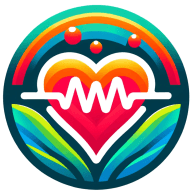What Recovery Techniques Are Recommended by Fitness Coaches for Clients?
Unlock the secrets to efficient recovery as this article delves into time-tested techniques recommended by top fitness coaches. From the benefits of static stretching to the importance of hydration, gain expert-backed insights to enhance post-workout recovery. Discover how intentional movements and specific breathing exercises can optimize the body's return to peak performance.
- Static Stretching Improves Climbing Performance
- Active Recovery Reduces Soreness
- Stay Hydrated to Prevent Muscle Cramps
- Box Breathing Calms the Nervous System
- Intentional Movement Enhances Recovery
Static Stretching Improves Climbing Performance
Climbing is physically demanding, and recovery is a vital part of avoiding injury and improving performance. Static stretching is one of the most useful methods we've used with many of our members.
Static stretching involves stretching one muscle at a time, and then remaining there for a minimum of 15-30 seconds. Here at Climb On The Rocks, we recommend static stretches right after a climbing session, once the muscles are warmed up. This increases flexibility, which can increase the range of motion and may even improve the climbing technique of a climber. For example, one of our members, Tracy, a beginner who came to Climb On The Rocks early last year, was initially unable to reach certain climbing holds due to her limited shoulder range of motion. We added a steady static stretching session to her post-climbing routine that focused on shoulder and chest stretches. Tracy began to see a marked increase in her mobility over time, becoming able to ascend holds previously unachievable and climbing harder.
Static stretching is an easy but effective recovery practice for climbers of any ability. Incorporating static stretches into your post-climbing routine will help you stay flexible, less sore, and avoid injuries for a more enjoyable and rewarding climb. When you're new to climbing or just trying to maximize your recovery, talk to a qualified trainer at your local climbing center about static stretching. They can tailor a stretching program to suit your particular requirements and goals.

Active Recovery Reduces Soreness
One of our go-to recovery techniques for our running coaching clients is active recovery through very light jogging or walking. We'll implement this on rest days, usually after more intense training days, advising the runner to keep it very light and easy, but get their body moving. Active recovery works by increasing blood circulation to the muscles, helping to clear lactic acid and other waste products, promoting faster healing, and reducing stiffness. Active recovery can work wonders to reduce soreness and speed up recovery from harder training sessions, ultimately helping the runner to maintain consistency in their training.

Stay Hydrated to Prevent Muscle Cramps
I tell my clients to stay hydrated and keep their pH levels balanced because it helped one of them get over muscle cramps. They made sure to drink a lot of water during the day and took a hydration pill after working out. They also ate foods that were high in potassium and magnesium, like avocados and bananas, to keep their muscles in good shape. Over time, their cramps got better and they felt better when they moved around.
As part of my job, I see how important it is for busy people to get enough nutrients and water. It's easy and makes a big difference in my clients' energy and success, so I tell almost all of them to do it.

Box Breathing Calms the Nervous System
A good recovery technique allows a person's body to relax. A great technique relaxes you and is easy to do. The best techniques are easy, relax you, and are free to do.
The right breathing protocol is free, easy to do, and will relax your body. This type of recovery will best serve your nervous system, which needs to rest just as much if not more than the muscular system. There are many different breathing protocols out there, and I suggest you explore outside of this article for more than the one I'll be introducing.
How to Box Breathe:
This method will allow you to slow down your heart, calm your mind, and give some space for the nervous system to recover in just two steps.
First
- Lie down on a comfortable surface or allow yourself to sink into your seat.
- Take 10 deep voluntary breaths.
Second
- You will breathe in for 4 seconds, hold your breath for 4 seconds, then breathe out for 4 seconds, and finally wait 4 seconds until you breathe in again.
You can do this for as many rounds as you'd like. I would suggest starting with 2-5 rounds if you've never done something similar before.
Feel free to do it at any time of day. I find this recovery technique helps me most to change from my "go" mindset after work into "relax" mindset once I'm done, and to ease myself into sleep. However, this technique can help relax you even in the middle of a busy work day, so try it at any time.
If you think you'd enjoy a guided recovery technique better then I'd suggest going on YouTube and looking for "guided breathing protocols." Any protocol that lets you relax will allow you to have better recovery.

Intentional Movement Enhances Recovery
Active recovery through light movement, like walking or yoga, has been incredibly effective for one of my clients dealing with post-workout soreness. They initially struggled with stiffness after intense sessions, but incorporating low-intensity activities on rest days improved blood flow and reduced recovery time. Stretching combined with foam rolling further helped release tension and boost mobility. This approach not only eased soreness but also kept them consistent with their fitness routine by avoiding complete inactivity. Recovery isn't about doing nothing—it's about intentional movement to help your body repair and reset.


